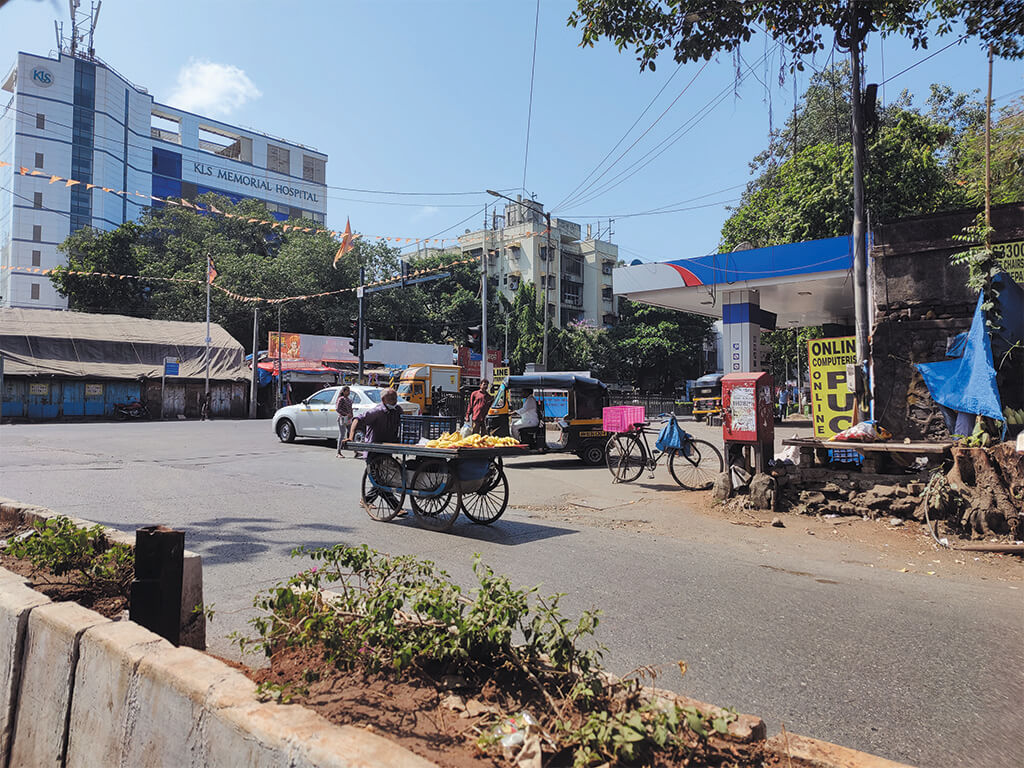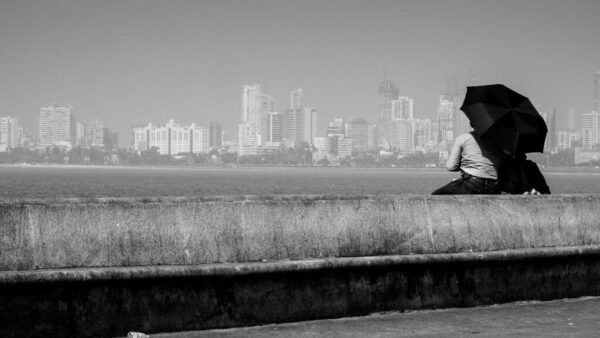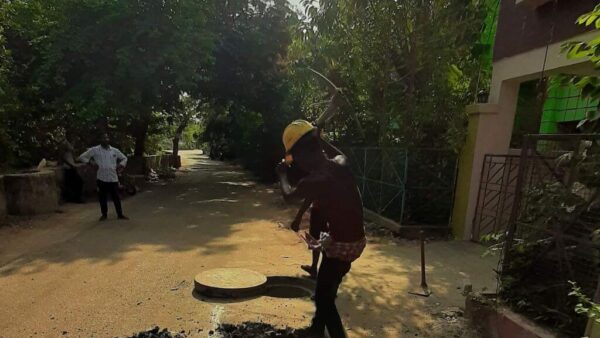In Delhi, 32-year-old Anil Kumar, a food delivery driver, echoes the story of his compatriots from other cities – people who receive their food parcels do not bother to offer him even a glass of water in the relentless heat. As temperatures broke records in the city, informal workers spoke of how it was impossible to be out working between 12 noon and 4pm, how those working with metal rods on construction projects found the rods too hot to handle even in the evening, and how water in public taps flowed at near-boiling point. A woman gig worker for a well-known door-to-door home service, who did not want to be identified, narrated to us that she was not allowed to use the washroom at work which has an impact on how much water she drinks in the heat.
The state of informal workers in India is deplorable; it worsens during heat waves. The unprecedented rise in temperature has meant that the country’s large informal sector which employs almost 82 percent of its workforce[1] has to suffer the consequences of working in sectors that keep our cities running. Construction workers, gig workers, autorickshaw drivers, street hawkers and vendors among others are struggling to eke out a living in the record-breaking heat. As researchers pointed out, the geography of heat stress overlaps with the geography of class as well as caste.[2] The last time cities paid attention to informal, lower-class, low-caste workers was when millions of them were forced to walk thousands of kilometres back to their homes after the lockdown was imposed during the pandemic.
If working conditions are hardly heat-proof, their living conditions are no better. Pushed into cramped, informal and inhospitable houses without adequate air circulation or even basic cooling systems like fans, their living conditions can cost them their lives, as was the case with the 40-year old factory worker who died in his no-fan hut in Delhi[3] on the day the city recorded its highest-ever temperature at 52.9 degrees Celsius.[4] Severe heat has claimed at least 60 lives across India, including 10 poll officials in Bihar, since May 30 when temperatures touched 50 degrees Celsius in some places.[5]
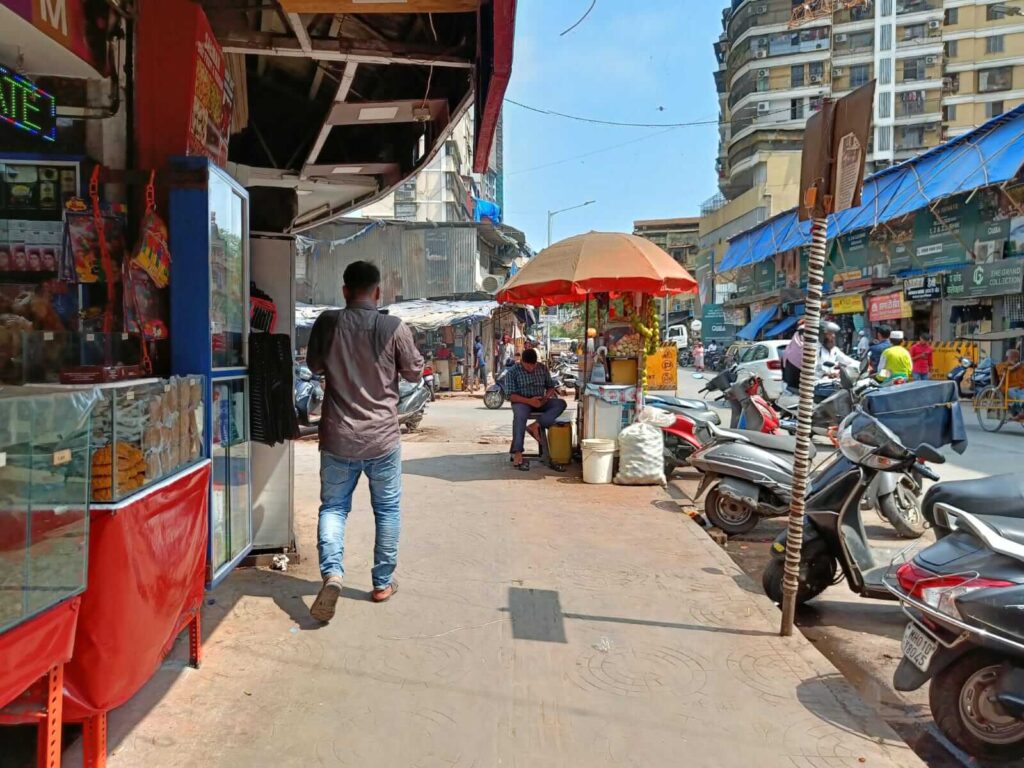
Photo: Vedant Mhatre
Precautions but for whom?
Government advisories recommend people[6] stay indoors, keep cool by using a fan and/or cooler, plan ahead to avoid being outdoors during the hottest hours, keep the home cool with blackout curtains and air conditioning. While middle and upper class people can follow these guidelines, others do not have the privilege to do so.
Delivery drivers are forced to work around the clock irrespective of the heat. With most platform workers stuck in a pay-per-delivery cycle, the system does not support “plan ahead” or “stay indoors” ways to beat the heat. “The on-ground conditions of workers make them vulnerable to heat, it’s hard work,” Dr. Mukhtar Alam, national coordinator and spokesperson of Gig Workers Association (GigWA), India, tells Question of Cities. The Delhi-based GigWA with a pan-India footprint advocates precautionary measures during climate crises. “We requested that the National Disaster Management Authority declare heat waves as a ‘disaster’ because only then will they be treated as such by employers and companies, with the importance and funds required,” he adds.
Hawkers and vendors, whose work is on the streets, do not have a choice either. The National Hawkers Front (NHF) is agitating the central government and policy makers to recognise that farmers and street vendors are the first to be hit by climate change events. The NHF was at the international climate summit COP28 in Dubai last year to draw attention to the plight of hawkers during climate events.
“We knew what was coming,” says Jay Vyas, 33, NHF convenor in Gujarat, about the impact of increasing heat. “People don’t go out during the day, they don’t even step out at night. Fruit and sugarcane juice sellers, whose business booms in summer, suffer.” This compounds their plight as they have to pay municipal corporations and other outgoings even in low business times.
Vyas explains that loo, the northern summer winds, also make hawkers fall ill after a long time outdoors; many complain of loss of appetite, headaches and dizziness. Vendors, who can afford to, take breaks; the rest either shut shop or somehow struggle to keep going. This makes it imperative that municipal corporations provide heat mitigation measures such as shaded areas, cooling shelters, and drinking water across the city.
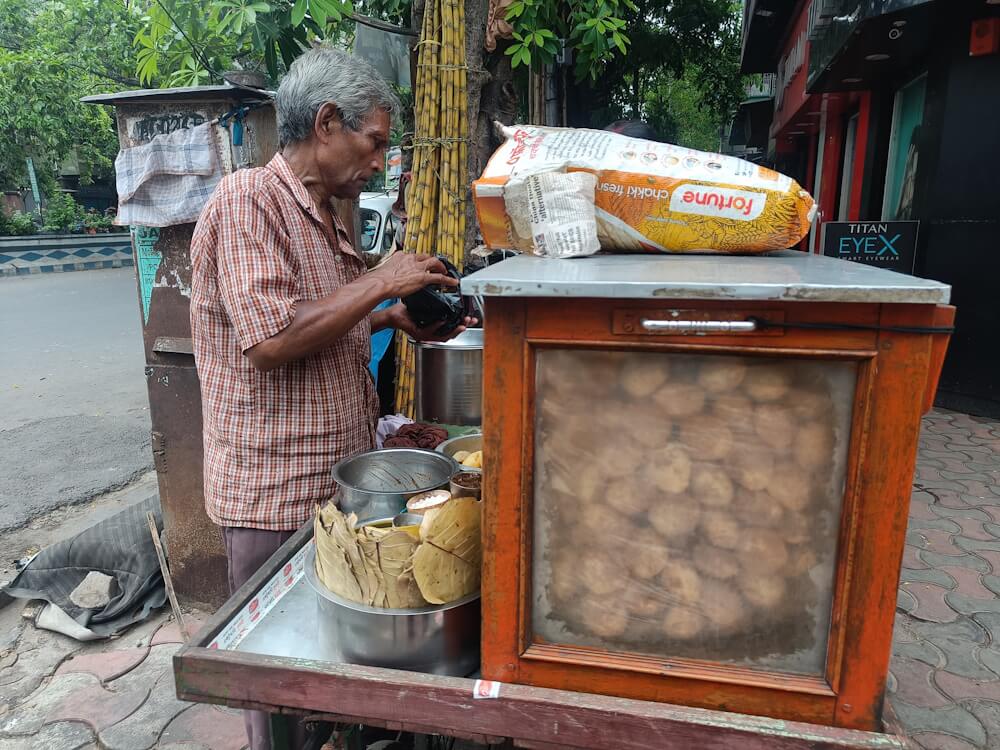
Photo: Zoya Khan
“Can’t choose comfort over wages”
Vijay Prasad, 73, a puchka seller in Kolkata says, “I can’t stand for long hours so I have this stool beside me.” Prasad has been at it for 23 years and slogs because his son, an engineer, had to leave work due to mental health issues. Assisted by his daughter-in-law who fries puris in their house under a pull bridge, he says, “The heat makes it difficult for both of us but we don’t have a choice. We can’t choose comfort over our daily wages.”
The family works and lives in the heat. They are unable to afford vegetables and sustain on paanta bhaat (rice soaked in cold water along with onions). “We add potatoes to it when we can afford them. We fill our stomachs, fish and other things are not in our price range,” he says.
A study found that urbanisation contributed to the temperature rise in Kolkata and 80 percent of the warming has been recorded in the city area. Experts point to the need for water bodies and greenery that can combat heat but are depleting.[7] Trees do not cool cities but are also places of rest for informal outdoor workers.
Jharkhand boy Sonu Kumar, 18, says the heat in Kolkata feels lesser than in his hometown. He sells soda in the Chamrahaat (leather market) in Padma Pukur and Entally area, and earns around Rs. 15,000 per month. “Right now, women are finding it difficult to work in the kitchen but nobody thinks of installing a fan or cooler there. I set up my stall under a tree and sit in the shade, when I find some.”
Shade in public areas is an important aspect for outdoor workers. Vyas says, “hawkers’ livelihoods are related to trees and shade. Where will hawkers set up shop if there are no trees? Customers need shade to park their vehicles, shop or eat. Places that have shade do better business as compared to those that don’t. Why are trees not a part of our urban plans? Vendors don’t have time to dwell on how climate change is affecting them but they have finally understood it this summer.”
Dharmendra Kumar, secretary of Janpahal, a community and labour organisation, says, “Street vendors have been identified as one of the most vulnerable groups to heat waves by the National Disaster Management Authority which advised governments to provide facilities like shade and water to mitigate the heat impact on street vendors.” Janpahal also manages night shelters in Delhi[8], where people seek respite from heat. “Municipal bodies should make climate-resilient street vending plans urgently,” he insists.
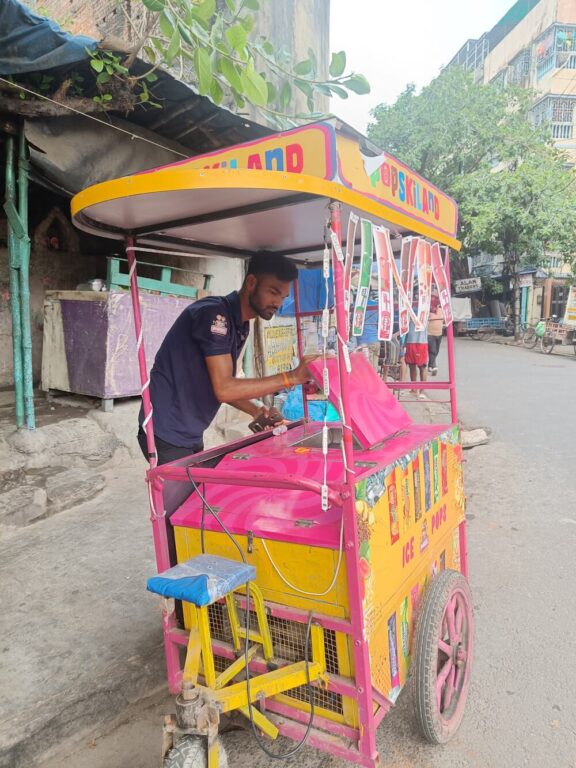
Photo: Zoya Khan
‘Only tough ones survive’
Amid the increasing frequency and intensity of heat waves, the GigWA sent a memorandum to the union Minister of Labour and Employment and the NDMA to protect workers from heat waves. This includes the right to refuse; apps are set up so that delivery agents are penalised, even suspended, for declining orders which is harsh during heat waves. It also suggests introducing a heat surcharge. Sukhvinder Singh, a delivery driver got a paltry Rs 15 as heat surcharge for every delivery made in the heat but it is not the norm yet.
The demand is also for “access to shade, drinking water, UV protective gear, introducing pink toilet access for women platform workers” as well as for emergency helplines and training sessions to prevent heat strokes. The support system is important because, as is well known,[9] delivery platforms term these workers as “independent contractors’’ or “delivery partners’’ and not even contractual employees.
Delhi’s Anil Kumar, suffering endlessly while delivering groceries in under 10 minutes, tells Question of Cities: “I quit. Only the tough ones survive. There is no place to sit or drink cold water, customers don’t offer it. If I decline an order, my identity is blocked and I am suspended for some time. There’s too much labour for too little money.” Each order took about 20 minutes in the relentless sun; despite servicing 50-70 orders a day, he could not provide enough for his family.
Pritam, also a grocery delivery driver, pauses to sip water after reaching his destinations and requests customers to collect parcels from the ground floor in buildings without lifts, to combat the heat. “The app model has a pay-per-delivery model, my monthly take-home depends on deliveries I do. On days I had a heat stroke, I lost money.”
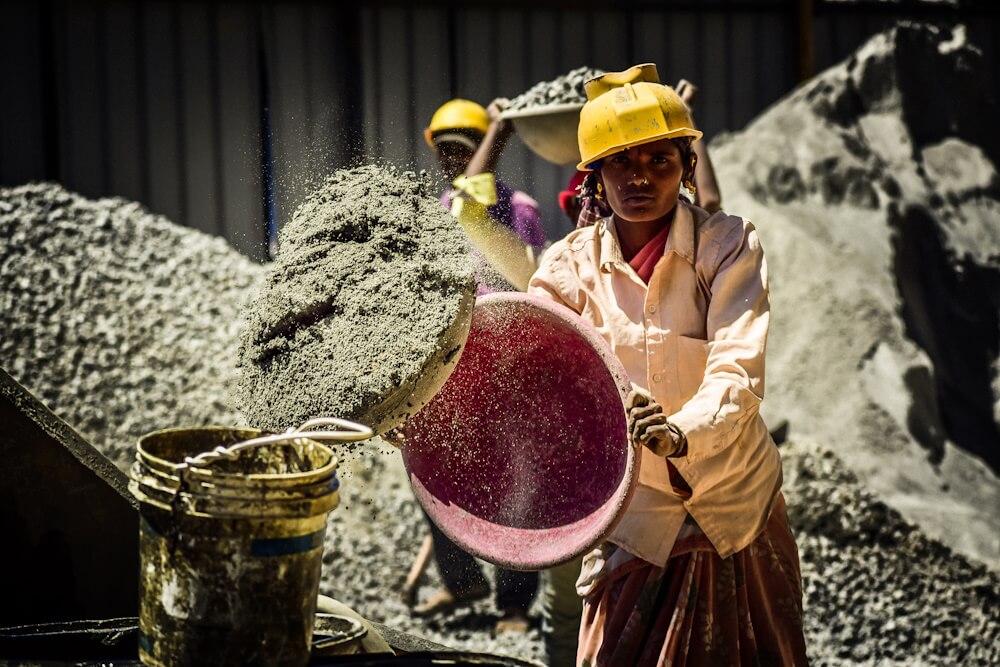
Photo: Wikimedia Commons
Unequal heat
Women who do domestic work are neither paid nor given days off. Apart from paying extra attention to young children under their care, they tend to adults and the elderly too. Cooking in the heat also means women are exposed to higher temperatures than others. Homemaker Suby Wahid, 33, has a brief respite as her children are on summer vacation. “Even this burqa should be made of a more comfortable or different material so that we can get some relief from the heat when outdoors,” she says.
Women who earn a living from working from home also experience reduced productivity and loss in wages. A study found that the heat reduced women’s output by 30 percent.[10] Besides, women do not have equal access to cooling. A report on cooling access gaps between men and women calls for providing “equitable access to cooling options that are environmentally sustainable, efficient, affordable.”
Lakhs of Indians are grappling with the heat in homes made of aluminium sheets, without natural and manual ventilation, and minimal support from the government. Cool roof technology has worked but is not part of nation-wide policies. The GigWA memorandum calls for urban design with adequate greening to mitigate climate change effects in cities. The heat advisories currently being issued are welcome but they, by design or default, exclude millions who work outdoors and as gig workers.
Heatwaves are a climate emergency. Heat does not discriminate but hurts the vulnerable the most. Deaths and illnesses due to heat stress are preventable if heat plans and policies provide for the most marginalised people.
Zoya Khan contributed to this reported essay from Kolkata.
Cover photo: Shivani Dave

